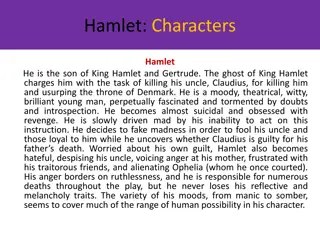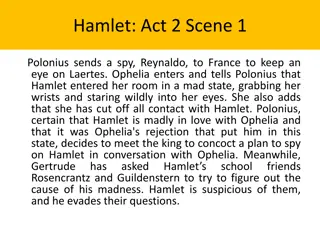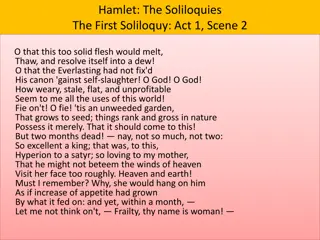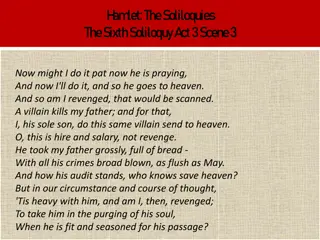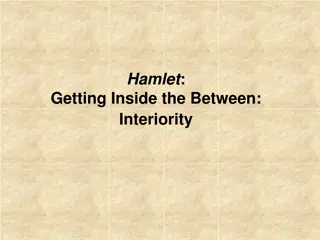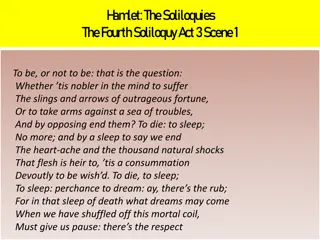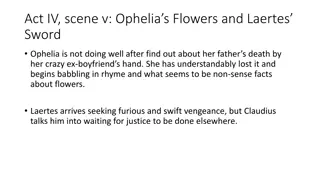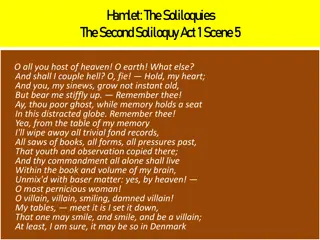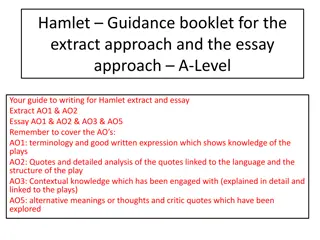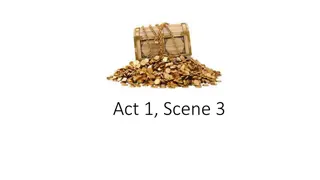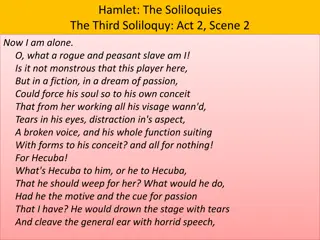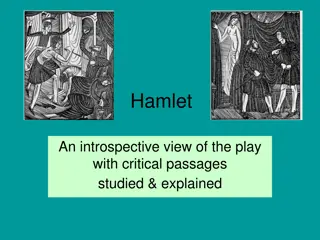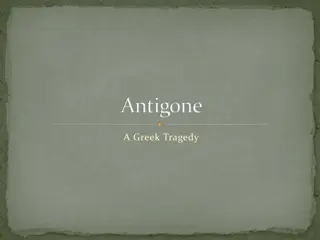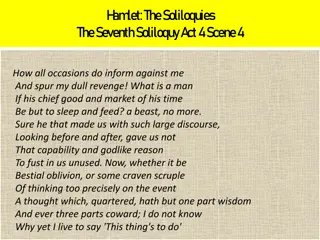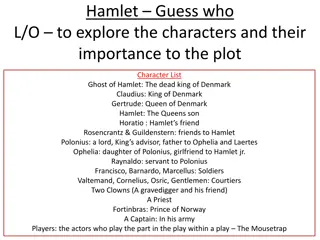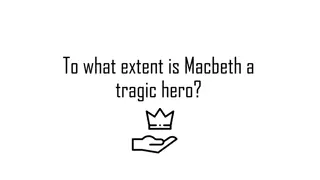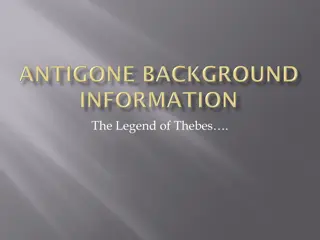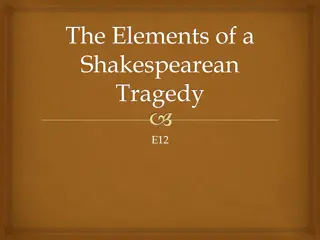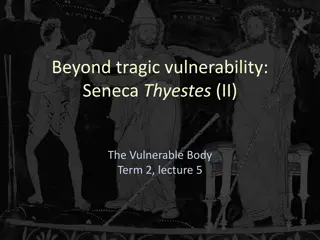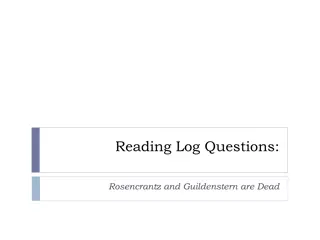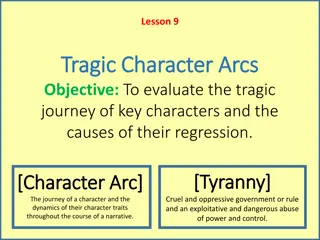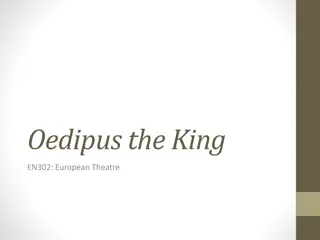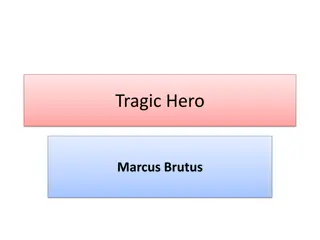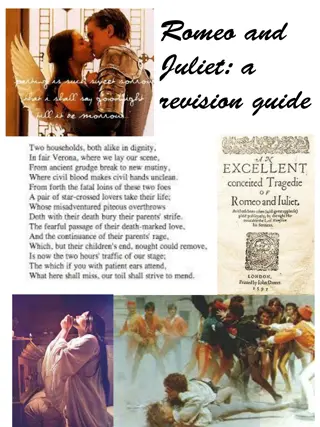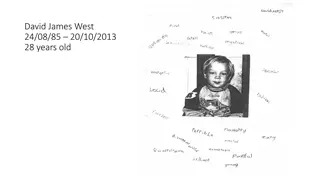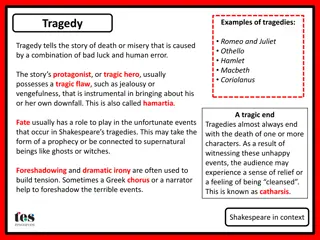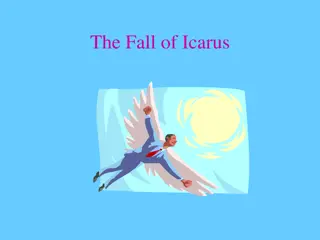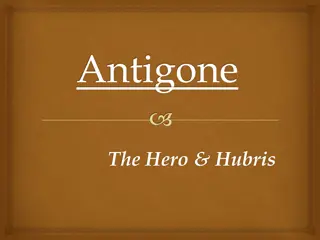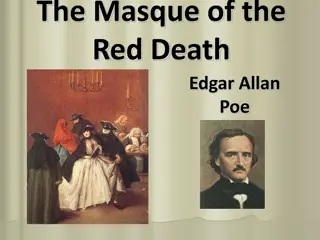Analysis of Shakespeare's Tragic Play - Hamlet
The story of Hamlet unfolds in Denmark, revolving around the themes of revenge, madness, and deception. The protagonist, Hamlet, seeks to avenge his father's death while grappling with moral uncertainty. As the narrative unfolds, layers of deceit, betrayal, and tragedy are revealed through complex character dynamics. Shakespeare's exploration of identity, madness, and the nature of man resonates with timeless themes that continue to captivate audiences.
Download Presentation

Please find below an Image/Link to download the presentation.
The content on the website is provided AS IS for your information and personal use only. It may not be sold, licensed, or shared on other websites without obtaining consent from the author. Download presentation by click this link. If you encounter any issues during the download, it is possible that the publisher has removed the file from their server.
E N D
Presentation Transcript
The plot (1) The story is set in Denmark and it starts with the death of the king of Denmark. His wife, Gertrude, marries his brother, Claudius, who takes the throne. Hamlet, the king s son, sees his father s ghost, who tells him that he was killed by Claudius. After a long reflection and many doubts, Hamlet decides to take revenge for his father s death. He starts pretending to be mad and refuses the love of Ophelia, who is the daughter of the king s counsellor, Polonius. Hamlet wants to see Claudius s reaction in front of a theatre play, The Murder of Gonzago, where a fratricide is staged. When he sees the scene, Claudius leaves the room. ! The Murder of Gonzago represents a play within a play , similar to a Chinese box structure. It s a performance by means of which reality is revealed and underlines the difficult relationship between reality and appearance.
Plot (2) Then, Hamlet accuses his mother of betraying his father s memory. When he does this, he hears a noise from the curtain and kills the person who is behind it. He thought he was Claudius, but it was Polonius. Claudius, worried because of the situation, sends him in war to England controlled by Rosencrantz and Guildenstern. During Hamlet s absence, Ophelia goes mad and drowns herself. Her brother Laertes decides to take revenge of his sister and his father. Claudius organizes a duel between them and gives Laertes a poisoned sword. However, both Laertes and Hamlet are wounded with this sword and they both die. Before dying, Hamlet wounds Claudius with the poisoned sword and he dies, too. At the end, Gertrude drinks a poisoned drink and dies.
Sources & Themes The source for Hamlet was the Historia Danicae, by the Danish historian of the 13thcentury Saxo Grammaticus. The other source is a revenge play called Hamlet written by Thomas Kyd, who was Marlowe s friend. Hamlet has a standard revenge plot, but it contains many different themes. It contains elements of action, power, honour, justice, doubt and death, the restoration of order and the nature of man. However, the most important themes are the MASK and the MADNESS. In fact, every character has a mask and a double personality. Hamlet pretends to be mad, but in reality he is not mad. All the characters are gradually transformed in something different. The ghost is a double illusion: he seems to be the spectre of Hamlet s father, but he is also the cause of Hamlet s death.
Madness is represented by Hamlet and Ophelia. The first is fake, the second is real and tragic. The cause of contamination is POISON, a poison has supposedly killed Hamlet s father, the poison on the sword and the poison that kills Gertrude. It represents the evil which contaminates society.
The character of Hamlet He s one of the first modern characters in literature. He is isolated and out of society. He lives in moral uncertainty (he asks himself what to do when he has to avenge his father). The question of how he should act can only be answered by himself. He has self-consciousness and is free to decide by and for himself, although his decision causes a series of deaths. This brings the audience to ask if he was right or wrong and teaches to always question oneself.



